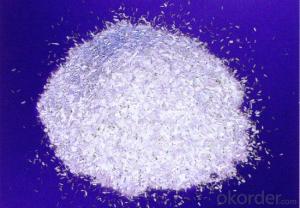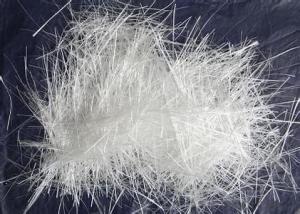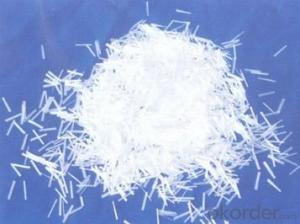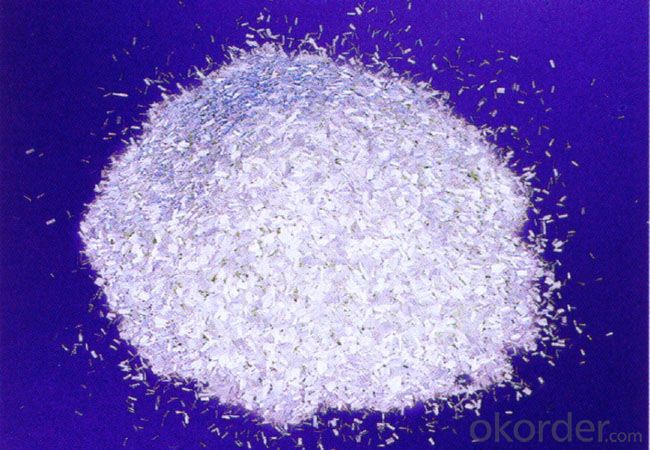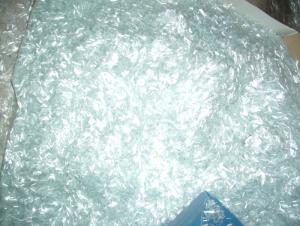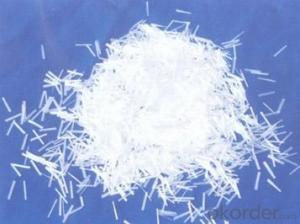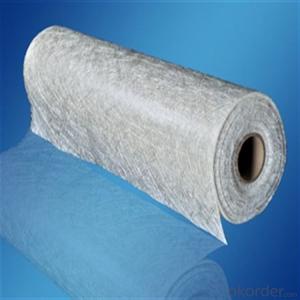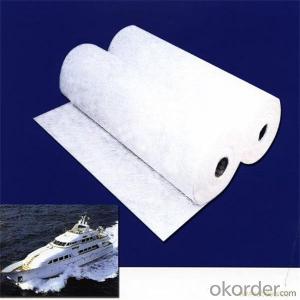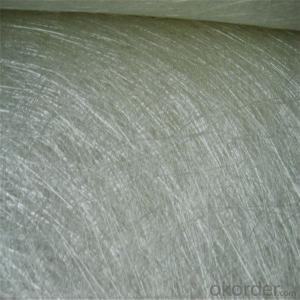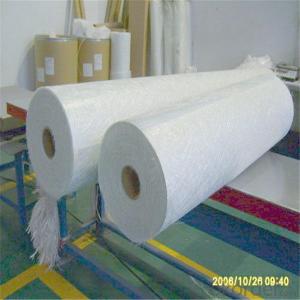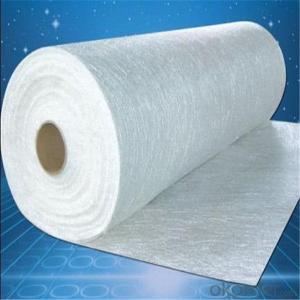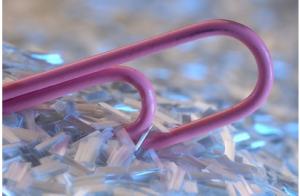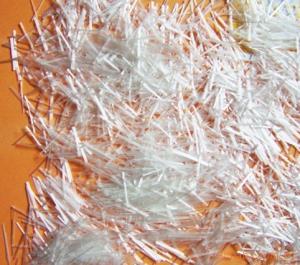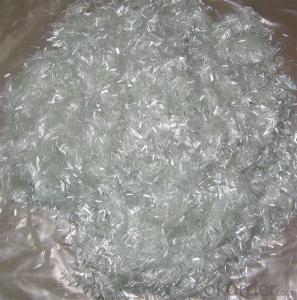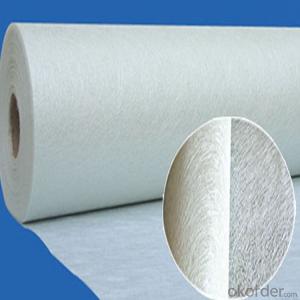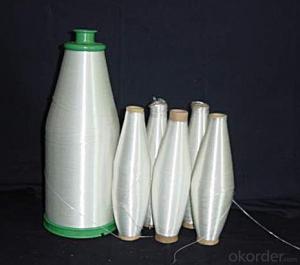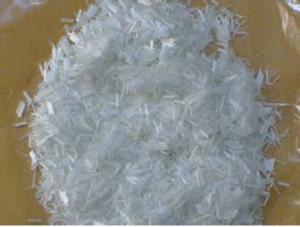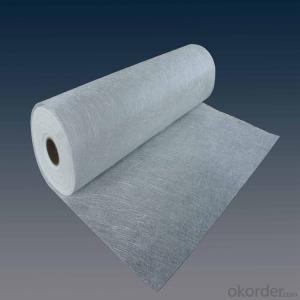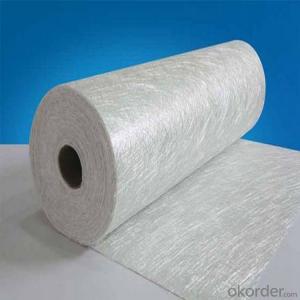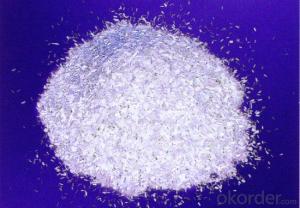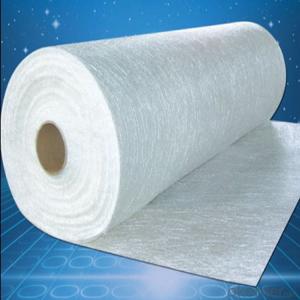Fiberglass Chopped Strand e-glass Fiber for Thermoplastic
- Loading Port:
- Shanghai
- Payment Terms:
- TT or LC
- Min Order Qty:
- 20000 kg
- Supply Capability:
- 200000 kg/month
OKorder Service Pledge
OKorder Financial Service
You Might Also Like
Description:
E-Glass Fiber Chopped Stands for Thermoplastic are based on silane coupling agent and special sizing formulation, compatible with PA,PBT/PET, PP, AS/ABS, PC, PPS/PPO,POM, LCP;
E-Glass Chopped Stands for thermoplastic are known for excellent strand integrity, superior flowability and processing property, delivering excellent mechanical property and high surface quality to its finished product.
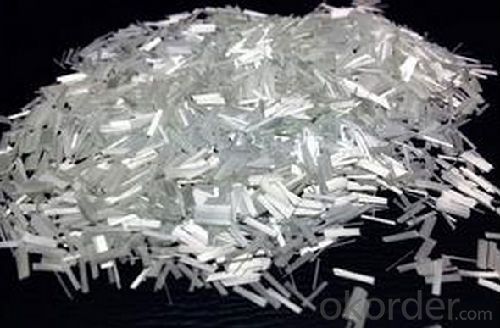
Product Features:
Extremely low resin demand, delivering low viscosity to BMC paste
High impact strength; High LOI rate
High strand stiffness; Compatible with rubber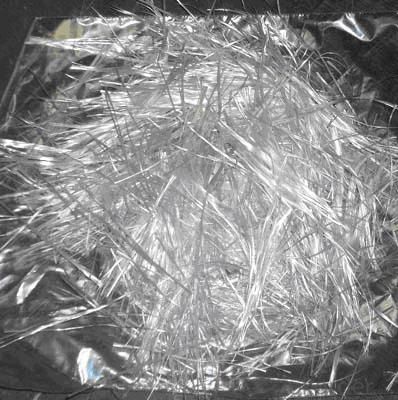
Product Specifications:
Property | Fibre diameter | Moisture Content | Size Content | Chop |
(%) | (%) | (%) | (%) | |
Mathods | IS01888 | ISO3344 | ISO1887 | |
3mm | ±10 | ≤3.0 | 0.1±0.05 | 98 |
6mm | ||||
9mm | ||||
12mm |
Packaging:
A:We have our own factory , we are on this business more than 10 years.
Each bag can be taken (15-25kgs)。 Could also take a big container bag.
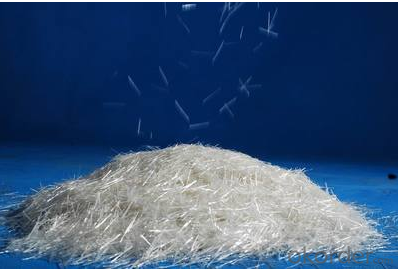
FAQ:
1..Is your company a factory or trade company?
A:We have our own factory , we are on this business more than 10 years.
2.Who will pay for the express cost ?
A: We can support you free samples ,but express cost will be paid by you .
3.How long is the delivery time?
A:within 10-15 days after receiving deposit.
- Q: What are the typical moisture resistance properties of chopped strand composites?
- Chopped strand composites typically have good moisture resistance properties. The chopped strand reinforcement, usually made of glass or carbon fibers, is inherently resistant to moisture absorption. This resistance is further enhanced by the matrix material, which can be a thermoset resin like epoxy or a thermoplastic resin like polypropylene. The matrix material in chopped strand composites acts as a barrier, preventing water molecules from reaching the fibers. This barrier effect is especially pronounced in thermoset resins, which cure into a rigid and impermeable structure. Thermoplastic resins also provide moisture resistance, although to a slightly lesser extent due to their semi-crystalline nature. The moisture resistance properties of chopped strand composites make them suitable for various applications in wet or humid environments. For example, they are commonly used in marine applications, such as boat hulls and decks, where exposure to water is constant. They are also used in automotive components, aerospace structures, and infrastructure applications where moisture resistance is critical for long-term durability. However, it is important to note that while chopped strand composites have good moisture resistance, they are not completely impervious to water. Prolonged exposure to moisture or immersion in water can eventually lead to some degree of water absorption. Therefore, proper design considerations, such as the use of appropriate surface coatings or moisture barriers, should be taken into account to maximize the moisture resistance properties of chopped strand composites.
- Q: What are the thermal conductivity properties of fiberglass chopped strand?
- Fiberglass chopped strand has relatively low thermal conductivity properties. This is due to the composition and structure of the material. Fiberglass is made up of thin, tightly packed strands of glass fibers. These fibers act as barriers to the flow of heat, making fiberglass an effective insulator. The chopped strands, which are shorter lengths of fiberglass fibers, still retain these insulating properties. As a result, fiberglass chopped strand can help to reduce heat transfer, making it useful in applications such as insulation, thermal barriers, and heat shields. However, it is important to note that the thermal conductivity of fiberglass chopped strand can vary depending on factors such as density, thickness, and manufacturing process.
- Q: What is the cost of fiberglass chopped strand?
- The cost of fiberglass chopped strand can vary depending on several factors such as the quality of the material, the quantity being purchased, and the supplier. On average, the price for fiberglass chopped strand ranges from $1 to $3 per pound. It is important to consider that bulk purchases or sourcing directly from manufacturers may result in lower prices. Additionally, prices may also vary based on the specific application or industry requirements. It is advisable to request quotes from multiple suppliers and compare prices to ensure the best value for your needs.
- Q: What types of resins can be used with fiberglass chopped strand?
- Fiberglass chopped strand can be used with various types of resins. The commonly used resins are polyester resin, epoxy resin, and vinyl ester resin. Polyester resin is widely used in fiberglass applications because of its affordability and ease of use. It can be used in boats, automotive parts, and construction materials. Epoxy resin is known for its exceptional strength and ability to adhere to different surfaces. This makes it perfect for high-performance industries like aerospace and marine. Vinyl ester resin combines the qualities of polyester and epoxy resins, offering improved resistance to corrosion and toughness. It is commonly used in applications that require enhanced durability and chemical resistance, like chemical storage tanks and pipes. Ultimately, the choice of resin depends on the specific requirements of the application, such as strength, durability, and chemical resistance.
- Q: Can fiberglass chopped strand be used in the production of insulation boards?
- Yes, fiberglass chopped strand can be used in the production of insulation boards. It is commonly used as a reinforcing material to enhance the strength and durability of insulation boards.
- Q: What are the different color options available for fiberglass chopped strand?
- Fiberglass chopped strand is available in a wide range of color options. Some of the most common colors include white, black, gray, blue, green, red, and yellow. These colors are achieved by adding pigments or dyes to the resin during the manufacturing process. Additionally, custom color options are also available, allowing customers to match specific color requirements for their applications. It's important to note that the availability of color options may vary depending on the manufacturer and specific product lines.
- Q: Can fiberglass chopped strand be used in concrete reinforcement?
- Yes, fiberglass chopped strand can be used in concrete reinforcement. Fiberglass chopped strand is made by cutting fiberglass strands into shorter lengths and is typically added to concrete mixtures to improve the strength, durability, and crack resistance of the final product. When mixed with concrete, the chopped strand disperses evenly throughout the mixture, providing reinforcement and enhancing the overall performance of the concrete. Additionally, fiberglass chopped strand does not rust or corrode like traditional steel reinforcement, making it a popular choice for concrete reinforcement in areas with high moisture or corrosive environments.
- Q: How does the fiber length affect the processability of fiberglass chopped strand composites?
- The fiber length of fiberglass chopped strand composites directly affects their processability. Longer fiber lengths generally enhance the composite's mechanical properties, such as strength and stiffness. However, longer fibers can be more challenging to process due to increased entanglement and higher viscosity of the composite matrix. On the other hand, shorter fiber lengths promote better flow and dispersion within the matrix, resulting in improved processability and easier manufacturing. Therefore, selecting the appropriate fiber length is crucial to strike a balance between processability and desired mechanical properties in fiberglass chopped strand composites.
- Q: Is fiberglass chopped strand electrically conductive?
- No, fiberglass chopped strand is not electrically conductive.
- Q: What are the typical curing conditions for fiberglass chopped strand composites?
- The typical curing conditions for fiberglass chopped strand composites involve subjecting the materials to a specific temperature and duration. The curing temperature typically ranges between 100-150 degrees Celsius, with a curing time of around 30-60 minutes. These conditions ensure the proper bonding and hardening of the composite materials, resulting in their desired mechanical properties.
Send your message to us
Fiberglass Chopped Strand e-glass Fiber for Thermoplastic
- Loading Port:
- Shanghai
- Payment Terms:
- TT or LC
- Min Order Qty:
- 20000 kg
- Supply Capability:
- 200000 kg/month
OKorder Service Pledge
OKorder Financial Service
Similar products
Hot products
Hot Searches
Related keywords
